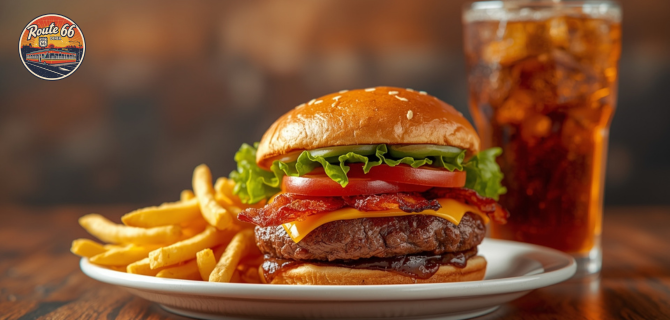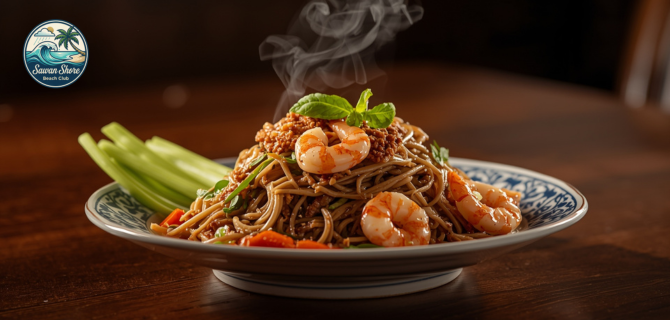
Digital QR Menus & Restaurant
Management in One App
Built for restaurants, cafés and hospitality venues.

Smart QR Menus & Table Management
No more waving for attention.

Make Service Effortless
Custom QR Menus
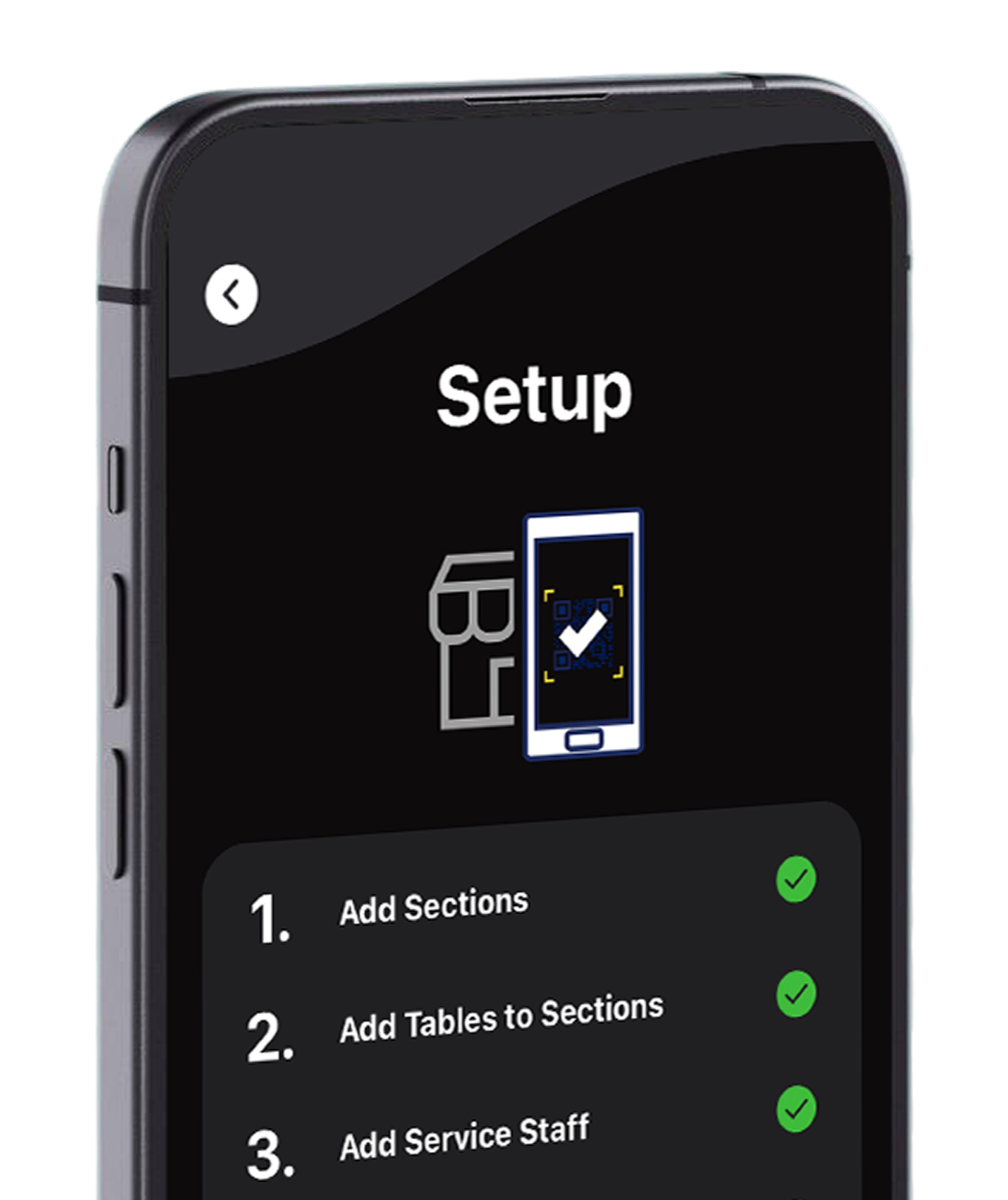
AI-Powered Menu Builder

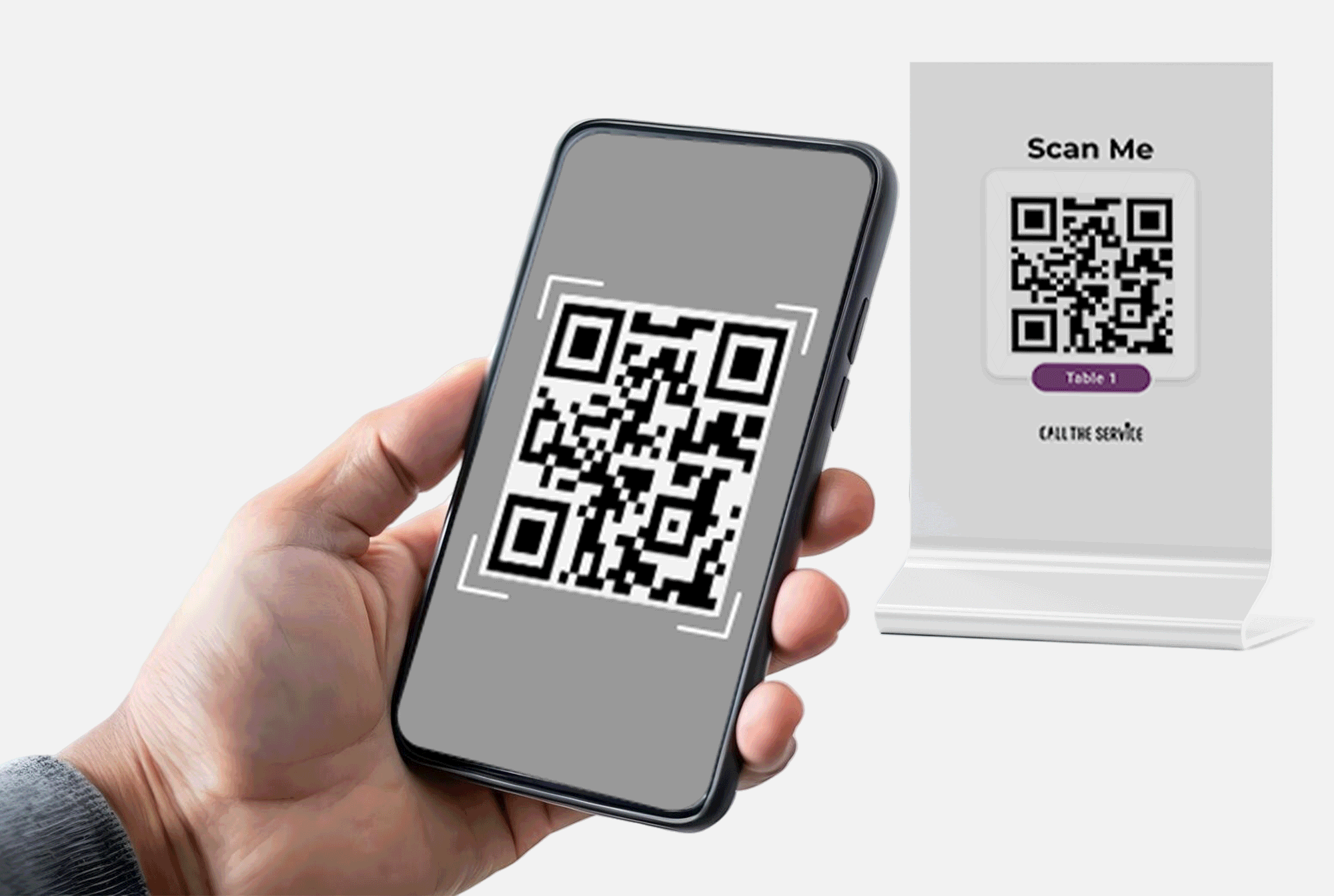
Let Guests Call a Waiter, Order, or Request the Bill Instantly
Visual Table & Staff Management
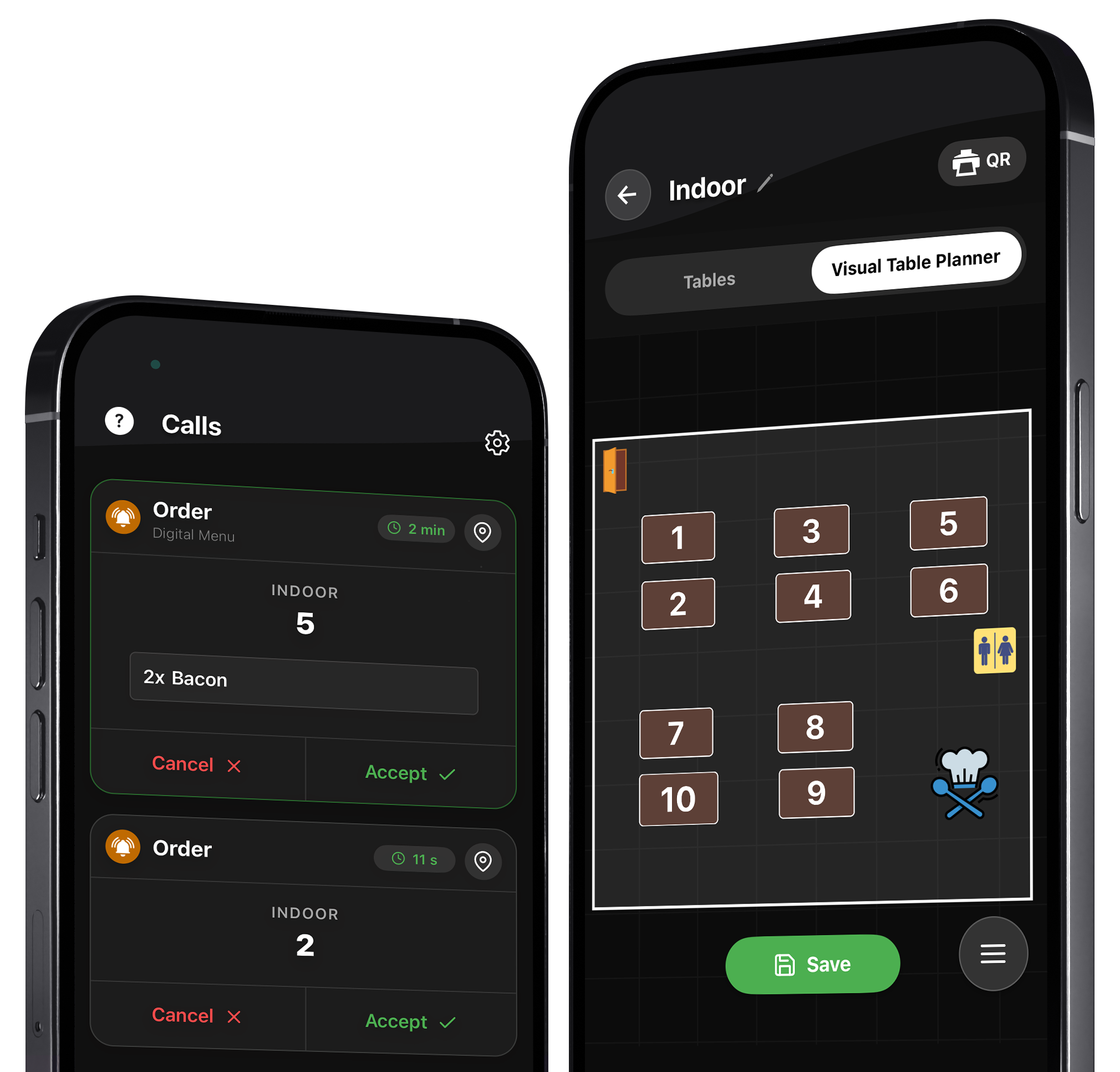
Your QR Menu, Built to Boost Sales and Save Time
Guest Feedback
Guests are invited to rate their experience after each service. They can leave a score and add comments.
“Small feedback, big impact.”
Multilingual Menus
Guests scan the QR code and pick their language.
Instant translation in 100+ languages.
Real-Time Menu Updates
Out of stock? Changed today’s lunch?
Update the menu instantly. Guests see changes in real time.
Promotions & Daily Specials
Add banners, deals or meal-of-the-day promos to highlight specials and boost orders.
Design Templates
Choose from our layout templates and have a ready-to-go menu in seconds
Pause Service, Stay in Control
Pause service with a cool down timer.
Set clear expectations and keep your team in control.
Guest Feedback
Guests are invited to rate their experience after each service. They can leave a score and add comments.
“Small feedback, big impact.”
Multilingual Menus
Guests scan the QR code and pick their language.
Instant translation in 100+ languages.
Real-Time Menu Updates
Out of stock? Changed today’s lunch?
Update the menu instantly. Guests see changes in real time.
Promotions & Daily Specials
Add banners, deals or meal-of-the-day promos to highlight specials and boost orders.
Design Templates
Choose from our layout templates and have a ready-to-go menu in seconds
Pause Service,
Stay in Control
Pause service with a cool down timer.
Set clear expectations and keep your team in control.
How the App Enhances Guest Experience
Guests scan a QR code
Instant access to your branded digital menu from any phone. No apps, no delays, no staff intervention.
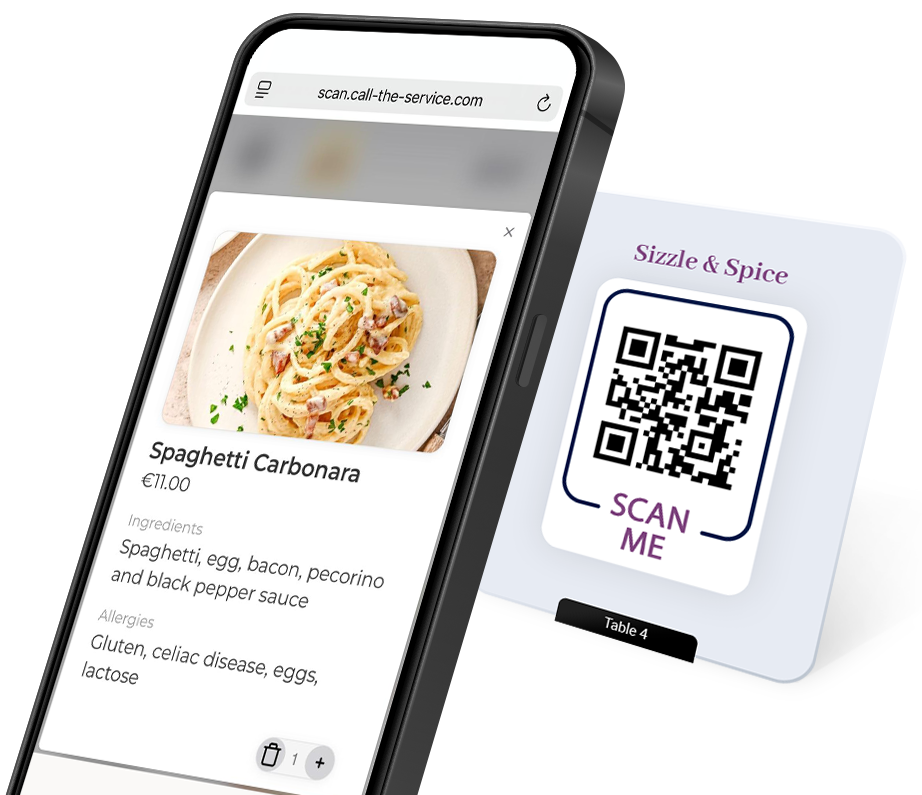
Guests order or call staff in one tap
Reduce response times and free up your team. Guests can place orders or request service discreetly, without needing to wave or wait.
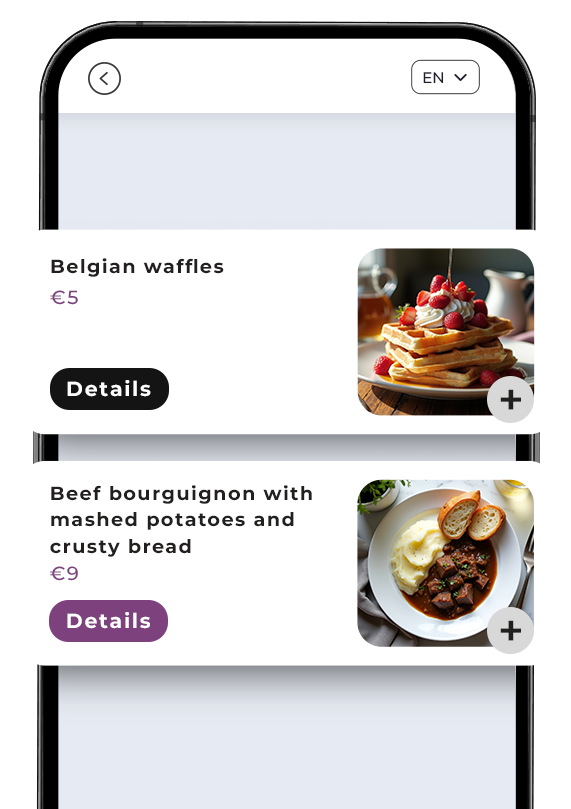
Guests request the bill
Speed up table turnover and improve payment flow. Guests tap to request the bill, making checkout seamless and efficient.
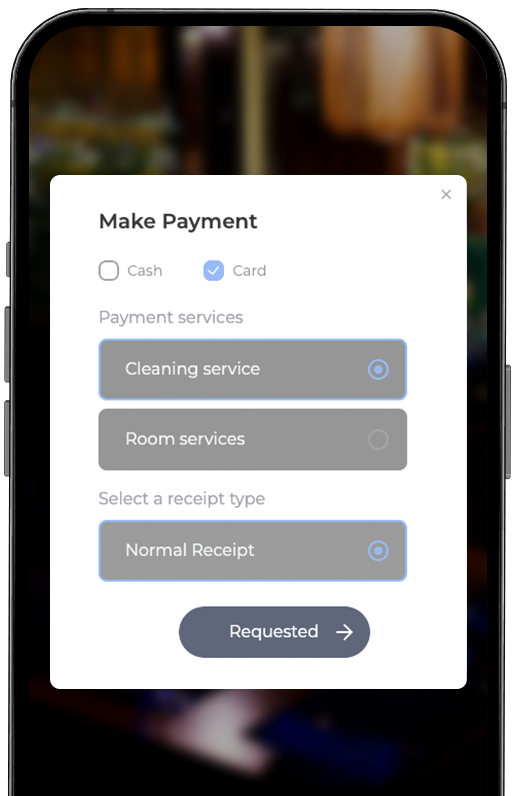
Guests scan a QR code
Instant access to your branded digital menu from any phone. No apps, no delays, no staff intervention.

Guests order in one tap
Reduce response times and free up your team. Guests can place orders or request service discreetly, without needing to wave or wait.

Guests request the bill
Speed up table turnover and improve payment flow. Guests tap to request the bill, making checkout seamless and efficient.

Simple Pricing, for QR Menus, Waiter Calls & More
Free Plan
€0 / month
100 service calls
Unlimited digital menu
Unlimited Users
Staff logins & table planner
Restaurant App available in 11 languages
Guest Page: Translate in 100+ languages
AI-generated Images
Custom QR design & templates
Monthly Plan
€19,99 / month
Unlimited calls
Unlimited digital menu
Unlimited Users
Staff logins & table planner
Restaurant App available in 11 languages
Guest Page: Translate in 100+ languages
AI-generated Images
Custom QR design & templates
Save €139.89 per year
Annual Plan
€99,99 / year
Unlimited calls
Unlimited digital menu
Unlimited Users
Staff logins & table planner
Restaurant App available in 11 languages
Guest Page: Translate in 100+ languages
AI-generated Images
Custom QR design & templates
Save €139.89 per year
Free Plan
€0 / month
100 service calls
Unlimited digital menu
Unlimited Users
Staff logins & table planner
Restaurant App available in 11 languages
Guest Page: Translate in 100+ languages
AI-generated Images
Custom QR design & templates
Monthly Plan
€19,99 / month
Unlimited calls
Unlimited digital menu
Unlimited Users
Staff logins & table planner
Restaurant App available in 11 languages
Guest Page: Translate in 100+ languages
AI-generated Images
Custom QR design & templates
Save €139.89 per year
Annual Plan
€99,99 / year
Unlimited calls
Unlimited digital menu
Unlimited Users
Staff logins & table planner
App available in 11 languages
Guest Page: Translate in 100+ languages
AI-generated Images
Custom QR design & templates
Save €139.89 per year
FAQ
What does the App cost?
You can start with Call The Service completely free. No setup fees, no contracts, and no hidden charges.
The Free Plan gives you access to:
✔ 100 service calls
✔ Unlimited digital menu
✔ Unlimited users
✔ Staff logins & table planner
✔ Restaurant app in 11 languages
As your needs grow, you can upgrade anytime to a paid plan to unlock:
✔ Unlimited calls
✔ Full access to AI menu creation
✔ Custom branding and white-label options
✔ Advanced analytics and reporting
✔ Priority support
Paid plans start at just €19.99/month, or get the best value with the Annual Plan at €99.99/year and save €139.89 per year.
Switch plans anytime with just one click. No commitments, no surprises.
How does Call The Service actually work?
Call The Service makes it easy for guests to order and request service directly from their phones. No app download required—they simply scan a QR code on the table, view your digital menu, and call staff or place orders instantly.
It’s seamless for guests and efficient for your team.
Can I use Call The Service in any type of restaurant or catering business?
Absolutely! Call The Service works for:
- Casual and fine dining restaurants
- Cafés and bars
- Food trucks and pop-ups
- Hotels, event spaces, and catering services
If you serve food or drinks, we make your service faster and smarter.
Is Call The Service available in multiple languages?
Yes! Guests can view your menu and interact with the app in multiple languages automatically—no manual translations required. Update your menu once, and it’s instantly available for international guests.
Can I customize the look and feel to match my brand?
Definitely. Personalize everything: Your logo, colors, fonts, and even include your Wi-Fi details to make it feel 100% like your own app.
Will Call The Service add extra work for my team?
Not at all. In fact, it reduces workload by:
✔ Minimizing back-and-forth with guests
✔ Streamlining orders and service requests
✔ Freeing up staff to focus on delivering great experiences
Your team stays in control with an intuitive dashboard.
Does Call The Service provide analytics?
Yes! The app includes an advanced analytics dashboard where you can track:
- How many calls are made by guests
- Response times from staff
- Peak hours and busiest tables
These insights help you optimize service and improve efficiency.
Can guests leave feedback or rate our service?
Absolutely. Guests can leave ratings and feedback directly in the app after their visit. It’s an easy way to measure satisfaction and gather valuable insights to improve your service.
Can I manage my staff with Call The Service?
Yes. You can create personalized staff logins, assign tables, and track performance in real time. This helps distribute tasks effectively and ensures guests are served faster.
How does the table planner work?
The Visual Table Planner allows you to map your restaurant’s layout and assign QR codes to each table. Staff can easily see which tables need attention, making operations smoother.
Do I need technical skills to set up the app?
Not at all. Call The Service is designed to be plug-and-play:
- Generate QR codes with one click
- Upload your menu and customize it easily
- No complex installation or hardware required
Our onboarding team can assist if needed.




